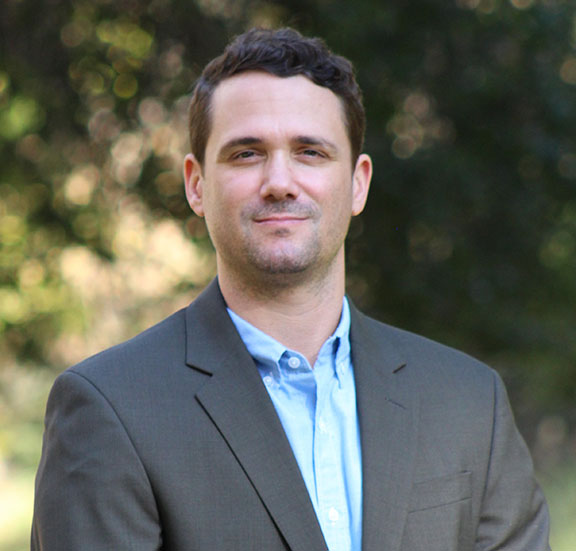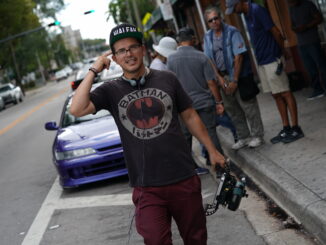
By Patrick Z. McGavin
Spencer Averick, ACE, has always crossed genre boundaries.
Working closely with director Ava DuVernay, Averick earned an Oscar-nomination for “13th” (2016), a documentary about the American prison system.
Their latest project, “Origin,” written and directed by DuVernay, synthesizes different storytelling techniques in exploring the ideas behind the Pulitzer Prize-winning writer Isabel Wilkerson’s 2020 nonfiction book, “Caste,” a historical look at caste systems in the United States, India and Nazi Germany. The film adaptation was called by the New York Times “as audacious as it is ambitious.”
An edited version of a conversation with Averick follows:
CineMontage: How did you and Ava Duvernay originally meet?
Spencer Averick: She was looking for an editor for her first project, a documentary called, “This Is the Life” (2008). She was putting out feelers in the typical Hollywood networking fashion. At the time, I had never done a feature-length project, or anything close to it.
We just came together, and had coffee. We were both at the same point of our career, trying to get going. Neither of us went to film school. We just loved film; we were a little bit self-taught, and we connected immediately as friends.
We made that documentary, and it was just the beginning of our careers. We hit it off, and we realized quickly we have similar sensibilities. We like similar films. We have a similar sense of humor. Everything was clicking. The creative relationship went from there. We both evolved. We both were just thrown into the fire, learning how to make films together, using our instincts. I still see her vision. Her strength, her taste, her vision and her originality was all there. Ava always had the vision to tell the stories she wanted to tell.
CineMontage: What’s fascinating about “Origin” is how it collapses the usual distinctions between fiction and nonfiction cinema.
Spencer Averick: One of the great things about working with Ava for the last 15 years is that we’ve alternated making a narrative film, and then a documentary. It’s literally gone back and forth the whole time. It’s great because we get to flex these other muscles. It keeps everything fresh, and never feels stagnant.
When this project came up and I read the script, it didn’t really hit me until we were in the middle of post-production that it felt like a documentary at some points. It’s almost a cinéma vérité documentary. We’re following this character to Germany and India. At first I was a little bit resistant. I quickly embraced the fact that we had all of this experience in the documentary world that we could put to use, and create this hybrid form.

Five years ago we could never have done this without our documentary experience. People who have watched it have called it a singular experience, or that they’ve never seen anything like it.
CineMontage: The film uses argument and dialectical exchange in place of traditional drama. You also have recurrent examples of breaking the fourth wall.
Spencer Averick: It was very liberating, exciting and fresh. With this film, the whole thing is a discussion. It’s a hard concept to grasp, especially for people that haven’t really thought about it before. Most of this movie is internal. Isabel Wilkerson (Aunjanue Ellis-Taylor) is figuring things out as she goes, as is the audience.
The character of her cousin, Marion (Niecy Nash), she was like the regular person you could explain things to without it being confusing. I hadn’t really thought about it that way.
It was always a delicate balance when we were cutting of deciding when to go into her research and when to stay with Isabel. At the end of the day, our North Star was to have everything we saw, historical moments or anything she was researching, the catalyst was her thinking, her research.
Isabel had to be the igniter anytime we dove into historical moments, whether it was a book she was reading, someone she talked to, going to a museum, or something that triggered her research deeper. That was a great process. I’d never done anything like that.
It’s a different kind of movie. It’s not a typical plot-driven movie, structurally. It’s about theme and tone. In this woman’s life, as she was trying to come up with her thesis for the book, she had a lot of tragedy in her life. That’s the story, and we had to live with it when we needed to live with that. We needed to feel what she was feeling. She was trying to push her career forward. She was at a crossroads. She wanted to take care of her mother, but she also needed to get her voice out there. Her family knew that. This character is sitting in this world without too much story.
CineMontage: How did you organize the flashbacks to Nazi Germany or the Jim Crow South in Depression-era Mississippi? Was it scripted like that?
Spencer Averick: It was in the script, but we did change them around a little. For the most part structurally the film stayed in script order, except for our entry points into these historical moments. I think at the beginning, it felt a little bit random how we got into them, and we felt like we needed to tell the story.
We worked a lot through the process of shifting around these entry points, just making them pointed and really having them come off as something important in Isabel’s research. It felt focused, and she had to be the one to take us there. We worked a lot together on trying to find those exact points to dip into and dip out. We did change those around quite a bit.
CineMontage: The swimming pool scene near the end is incredibly powerful. It almost doesn’t fit the larger narrative, but was that an example of the material so good you had to find a way to work it into the movie?
Spencer Averick: It doesn’t really have much to do with Isabel’s story or the larger narrative, but it was another example of caste, and it was so effective. We wanted to show the audience the repercussions or results of caste in a way that Americans hadn’t thought of before.
It was also very deliberate for Isabel at the very end of the sequence, she comes into the frame and she sits with the boy. She wants to be the story, and she wants to immerse herself rather than just writing a story. At that moment, she quite literally puts herself into the story. It’s a beautiful moment. We went back and forth a little bit about whether it was going to go in because it does break the law.
CineMontage: The last part uses extensive voiceover from the book. How did you decide to rhyme the soundtrack with the images?
Spencer Averick: The whole third act was something that took a while for us to crack. We needed the end of the movie to really drive home what caste means, and to drive home how she cracked the thesis, and figure out a way to tell the story. At the beginning it was a little more linear.
We showed examples of Nazi Germany, the Middle Passages before slavery, and the caste system in India. It was not really working, and then we just decided to just mix it up, and make one big jump to the other, and then do a big intercut, with the voiceover driving the whole thing.
We quickly realized that juxtaposing these images was clearly a way to show what caste was, and how it doesn’t matter what era you are in. If you’re in the 1930s or India now, or India 100 years ago, there’s a similar mentality in how the ruling hierarchy treats the lower hierarchy.
CineMontage: You have this great performance at the center with Aunjanue Ellis-Taylor. What was your approach to cutting her?
Spencer Averick: You are only as good as your actors. Aunjanue is such a great actress. In her performance, she didn’t really need to say a lot. You could see it in her eyes, or it was boiling up within her.
It comes down to really small nuances in a character, a look or a grin, especially with Aunjanue. Everything is so constrained and internal, it really did come down to very subtle nuances. It’s more fun and satisfying to craft a performance with a great actor, manipulating those nuances, than it is to cut together an action sequence or something.
We were not trying to hit it on the nose too hard. We didn’t need to, because you could see it in her face, and the way she reacts to things. It was really just digging into her performance. She gave us a lot to work with. It was a great pleasure of mine to edit it together.
It’s also great to work with Ava because she’s so dialed into the nuances of character performances. She does a lot of things really well, but that is her strong point. Over the years, I feel like I’m tuned with the character performances throughout the entirety of the film. Working with her, it took my understanding of character development into a wholly different level. That was the main drive, especially at the beginning when we were shaping this thing.
CineMontage: What about your own artistic journey; how you became an editor?
Spencer Averick: I grew up in the Bay Area, and I’m one of those movie kids from the ’80s and ’90s. I always loved movies. I had a little VHS camcorder when I was 10, and I never put it down. I’d make movies in the house, and annoy my parents. I didn’t really know what editing was, but there was something inside of me. I just knew I wanted to put images together. This was before computer editing was a household option. I went to college in San Francisco, and then I came down to Los Angeles, and quickly got into Final Cut Pro.
I did these little sketches that my friends were making, and it just felt very natural to me. All the feelings I had when watching movies in the 80s, like “E.T” (1982), “Stand By Me” (1986), and later Kubrick movies, I will always take with me the way they affected me. I feel the same when I’m editing films now. I’ve learned how to use my intuition and my personality to tell stories.
Patrick Z. McGavin is a Chicago-based critic and cultural journalist. He maintains the Substack, “Shadows and Dreams” (www.patrickzmcgavin.substack.com).





